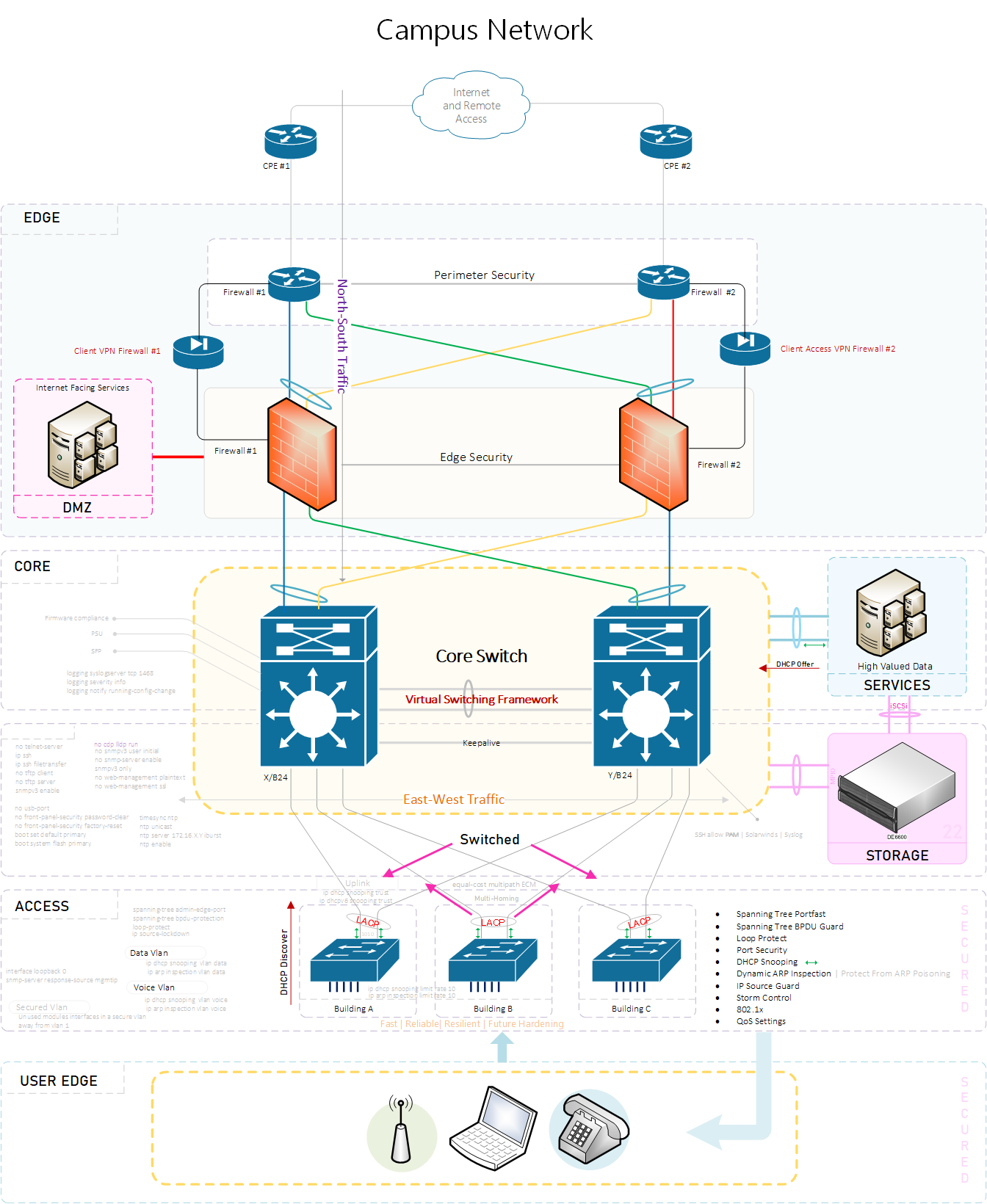The Three-Tier design is a network architecture that is commonly used in enterprise environments. It consists of a Core layer, a Distribution layer, and an Access layer. The Core layer provides high-speed connectivity and acts as the backbone of the network, the Distribution layer provides access to the Core layer and aggregates traffic from the Access layer, and the Access layer provides access to end devices such as servers, workstations, and printers. This design is also known as the Collapsed Core design because the Core layer and the Distribution layer are combined into a single layer.
To configure a Three-Tier design using Cisco commands, follow the steps below:
Configure the Core layer:
Configure the Core layer switches with high-speed links to provide the backbone of the network.
Configure the switchports connected to the Distribution layer switches as trunk ports.
Configure VLANs on the Core layer switches.
Sample Cisco commands:
interface GigabitEthernet0/1 switchport mode trunk switchport trunk allowed vlan 10,20,30
Configure the Distribution layer:
Configure the Distribution layer switches with uplinks to the Core layer switches and downlinks to the Access layer switches.
Configure the switchports connected to the Core layer switches as trunk ports and the switchports connected to the Access layer switches as access ports.
Configure VLANs on the Distribution layer switches.
Sample Cisco commands:
interface GigabitEthernet0/1 switchport mode trunk switchport trunk allowed vlan 10,20,30 interface GigabitEthernet0/2 switchport mode access switchport access vlan 10
Configure the Access layer:
Configure the Access layer switches with uplinks to the Distribution layer switches.
Configure the switchports connected to end devices as access ports.
Configure VLANs on the Access layer switches.
Sample Cisco commands:
interface GigabitEthernet0/1 switchport mode access switchport access vlan 10 interface GigabitEthernet0/2 switchport mode access switchport access vlan 20
Configure Spanning Tree Protocol (STP):
Configure STP to prevent loops in the network.
Configure the Core layer switches as the root bridges for each VLAN.
Sample Cisco commands:
spanning-tree mode rapid-pvst spanning-tree vlan 10,20,30 root primary
Configure Link Aggregation Control Protocol (LACP):
Configure LACP to provide link redundancy and load balancing between switches.
Sample Cisco commands:
interface GigabitEthernet0/1 channel-group 1 mode active
Configure VLANs:
Configure VLANs on the Core, Distribution, and Access layer switches to segment the network.
Assign ports to VLANs based on the device type and location.
Sample Cisco commands:
vlan 10 name Sales vlan 20 name Engineering vlan 30 name Marketing
Verify the configuration:
Verify the configuration by checking the switchport settings, VLAN configuration, and STP status.
Sample Cisco commands:
show interfaces GigabitEthernet0/1 switchport show vlan brief show spanning-tree vlan 10,20,30
By following these steps, you can configure a Three-Tier design using Cisco commands.
Follow a previous article on building a two tier campus network.
Design and Build a Two-Tier Campus Network Architecture
Follow this Cisco Validated Design for Inspiration.
Cisco Meraki has some good validated design ideas here.
